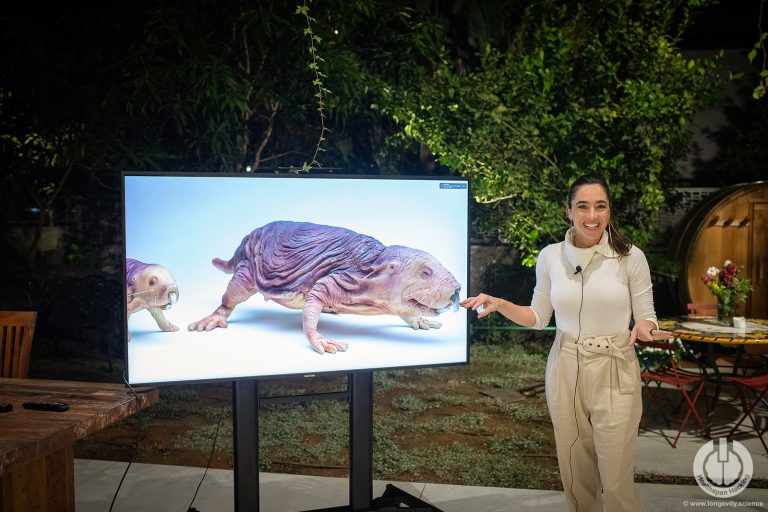Over the last hundred and fifty years, the human lifespan has doubled from 40 to 8- years. But the quality of life for the majority of our eldery folk has been severely impacted by chronic disease. It seems as if, by challenging the biological clock, we’ve run up against a limit to healthy aging that makes physical breakdown inevitable.
However, that’s not what we see in nature.
In this second part of our multi part series, we investigate aging in nature in order to understand whether illness in old age is inevitable in humans.
In Nature, Ill Health in Old Age is Not Inevitable
In the interest of learning about alternatives to the aging process humans experience, in recent years, biologists have studied the healthspan mechanisms of animals and plants that don’t age in the same ways that we do. These species may die of a disease or an accident, but, unlike us, they barely suffer senescence (biological aging). From unicellular and multicellular organisms to vertebrates, some species enjoy plateaued existence, even as they age, until the very end of life.
Take the Great Basin bristlecone pine – a long-living tree species found in the taller mountains of California, Nevada, and Utah. One member of this species has been around since the very early days of recorded history.
This tree is 5067 years old.
Another example of extreme health span is Turritopsis Dohrnii, also known as the immortal jellyfish. Found in the Mediterranean Sea and in the waters of Japan, these jellyfish are able to undo their development, aging not towards death but rather backward to their youth, and begin a new cycle.
If that were an option for humans, many would sign up for that in a heartbeat! It is one of the few known animals capable of reverting completely after having reached sexual maturity and, theoretically, this process can go on indefinitely.
Mother Nature is not against healthy longevity; she is just extremely selective of it. There’s still a long way to go from where we stand now to healthy longevity in humans, but gaining a better understanding of the very rare conditions when it is made possible is a step in the right direction.
We find extreme healthy longevity in some clams, turtles, lobsters, sharks and other animals. One of the secrets to their longevity is that they mostly manage to avoid the accumulation of damage overtime.
But, what about species that are biologically closer to us? Are there cases of mammals that age and maintain health simultaneously?
If we are able answer these questions, it would take us another step toward understanding the possibility of improving human health span, and making it possible.
Good Health in Old Age is Possible in Animals, Too
Turns out mammals can age healthily too. Nature has provided an astonishing example of health in old age in the form of a wrinkled rat, and the mysteries of its biology have puzzled scientists for decades. While this particular species may not be considered “cute” by the human critic, there are many reasons to admire and envy the mammalian world champion of healthspan – the naked mole rat. It lives in a good reproductive and health state for the most part of its 30 years of life – outliving rodents of its size ten times over. The naked mole rat is a unique creature in many ways; going above and beyond hygiene standards when compared to most other mammals. In their tunnels, they delineate a separate toilet area, where feces and urine get stored.
Yet, the characteristic perhaps most interesting for us in terms of healthy longevity research, is that naked mole rats are biologically at a risk of accumulating cellular damage as a result of metabolic processes similar to ours. The difference is that they seem to have found a way to overcome it. They are virtually resistant to cancer; there have been fewer than half a dozen recorded cases of cancer in the heavily studied naked mole rat. Even more interesting is the fact that, for them, the biological “cost of operating a life” does not rise exponentially with age. Rather, it has only negligible negative effect on their health.
Implications for Humans
How is it possible for the naked mole rat not to accumulate the ‘costs of operating a life’ in the same way that humans do? In 2017, scientists working for Calico, an Alphabet (Google) research and development company whose public mission is to devise interventions that enable people to lead longer and healthier lives, presented evidence that the naked mole rat is time-resilient in more ways than we knew. The mortality of the naked mole rat, they say, does not increase with age.
With discoveries like these, we are one small step closer to understanding the biology of healthy longevity. While, like naked mole rats, we, too, have figured out that separating the toilet from our bedroom is important, humans don’t have the longevity genes they do.
The next question has to be, are there cases of extreme health span in humans? We’ll explore the answer to that question in Part Three of this multi part series.
For Part Three: Is Living a Long Healthy Life Luck of the Draw? CLICK HERE
For Part One: Is Living a Long Healthy Life Luck of the Draw? CLICK HERE

